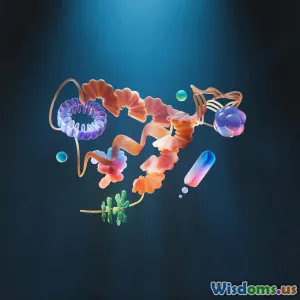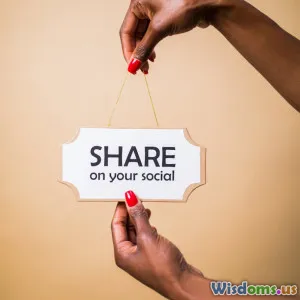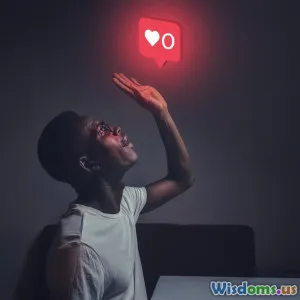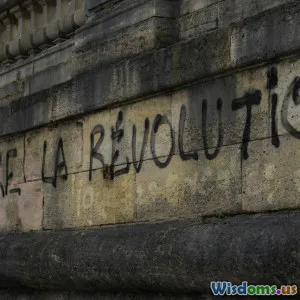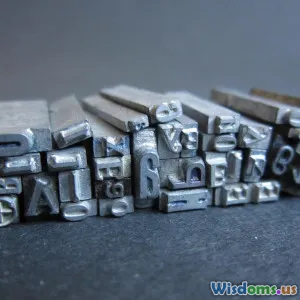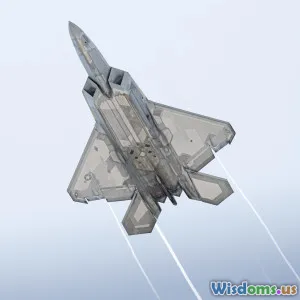
Modern Secret Organizations and Their Impact
8 min read Explore modern secret organizations, their influence, and historical context on society and governance. (0 Reviews)
The Hidden Influence: Modern Secret Organizations and Their Impact
Introduction
In a world where information is often publicly accessible, the existence of secret organizations continues to spark intrigue. Groups like the Freemasons, Skull and Bones, and the Bilderberg Group have long captivated the imagination of conspiracy theorists and historians alike. These organizations, often shrouded in mystery and purpose, hold significant weight in social and political contexts. But what is the true extent of their influence? In this article, we will explore modern secret organizations, their historical roots, outrageous claims, and the actual impact they have on today’s society.
Historical Background of Secret Organizations
Secret organizations are not a new phenomenon; their history can be traced back centuries. The Freemasons, for instance, emerged during the late 16th and early 17th centuries and provided a unique blend of community service and personal development disguised as esoteric tradition. Their ideals of brotherhood and moral uprightness found resonance during a time of political upheaval and religious strife.
The Illuminati, established in the late 18th century, has transformed into a symbol of extremity in conspiracy theories, although the original Bavarian Illuminati sought to promote Enlightenment values against religious oppression.
Variants exist worldwide: from masonic traditions that emphasize architecture and fraternal values to the disciplined secrecy of organizations like the Spanish Carbonari. As the centuries progressed, these societies have largely influenced political, artistic, and scientific movements across the globe.
The Structure of Modern Secret Organizations
One common thread among these groups is their self-governing nature, often requiring initiation and commitment to advance within the ranks. For example:
-
Freemasonry
The Masonic Order, often perceived through speculation, features an intricate level of structure that guides its operations. Every chapter operates autonomously under a Grand Lodge, retaining local control over proceedings while adhering to broader Masonic principles. -
Skull and Bones
This highly exclusive secret society at Yale University comprises influential alumni who have held powerful positions, including presidents and Supreme Court justices. With operations confined to its membership, it has faced allegations regarding its societal manipulation.
Modern-Day Examples of Secret Organizations
Iconic examples of modern secret societies that continue to shape international dynamics include:
-
Bilderberg Group
A semi-annual meeting of roughly 120 individuals from finance, academia, and politics, this group continues to face scrutiny for its closed-door discussions regarding major global issues. -
Bohemian Grove
This annual retreat in California serves as a playground for the political elite. The Grove is infamous for its extravagant gatherings where influential men discuss policy, business, and personal interests in private settings.
Influence on Society and Politics
Beyond rumors and conjecture, the influence of these organizations can often be traced artistically, socially, and politically. The interconnected web they drive through networking is a critical operating factor. For instance, the scope of decisions made by the Bilderberg group often leads to significant outcomes in global finance and international relations.
Experts like political commentator Daniel Estulin, who dissected the workings of the Bilderberg Group in his works, have noted how these discussions lay foundational pressures in international politics. Unelected elites participating behind closed doors sets an account of privilege contrary to principles of democracy.
Myths and Realities
Information about modern secret societies is susceptible to exaggeration. Advocates for conspiratorial theories portray a narrative of world domination through calculated moves. However, scholars argue that while this exists, most associations embody member support and norms rather than grand plots.
Former CIA officer Robert Baer famously remarked, “When you dig deep you find the answer isn’t what you expect. Most secret organizations can’t even agree among themselves.” This suggests that misunderstanding dominates the labyrinth of complexities surrounding secret organizations.
Modern Communication and its Impact
With the advent of technologies like the internet and social media, organizing in secrecy is not what it used to be. While private engagement remains vital, today, transparency and disclosure hold substantial weight in negotiations. The layers of accessibility mean that many can uncover long-hidden narratives, lessening the dramatic flair historically associated with secret organizations. Those that once operated in total obscurity may now find maneuverability restricted.
Ethical Questions Surrounding Secret Societies
The presence of organizations operating in secrecy raises ethical questions. The public often recalls with skepticism any group with an air of exclusivity. Are these secretive interactions detrimental to democratic norms or passionate pursuits? As history teaches us, alliances can be equally beneficial and detrimental.
Consider influential lobbying groups as covert stakeholders; they often retain access to the political arena while withholding accountability to the general public. This duality raises concerns about community representation versus elite advocacy.
Balancing Influence and Transparency
Organizations like the Freemasons, despite their opaque aspects, prioritize social service through scholarship and outreach programs. This noble facet of their operations cannot be neglected in the conversation about influence and testimony.
Institutions based upon mutual trust can accidentally walk that fine line between enlightenment and manipulation. While the necessity for inclusivity grows, organizations can adapt through programmed disclosures — embracing their roles within communities and the larger impact on societal advancements.
Conclusion
Modern secret organizations and societies create an intricate tapestry interwoven into today’s political and cultural fabric. Exploring their real impacts sheds light on public understanding and mitigates conspiracy theories that dominate the narrative. While the allure of mystique remains, fostering a dialogue on transparency and open community engagement is paramount to deconstructing its enigma.
As secrecy continues to mingle with modernity, a question emerges: How will the presence of secret organizations evolve in a landscape rejoicing in openness and communication? The road ahead remains fraught with mystery — but one thing is certain; the legacies of these societies will endure whether in secrecy or the limelight.
Rate the Post
User Reviews
Popular Posts








